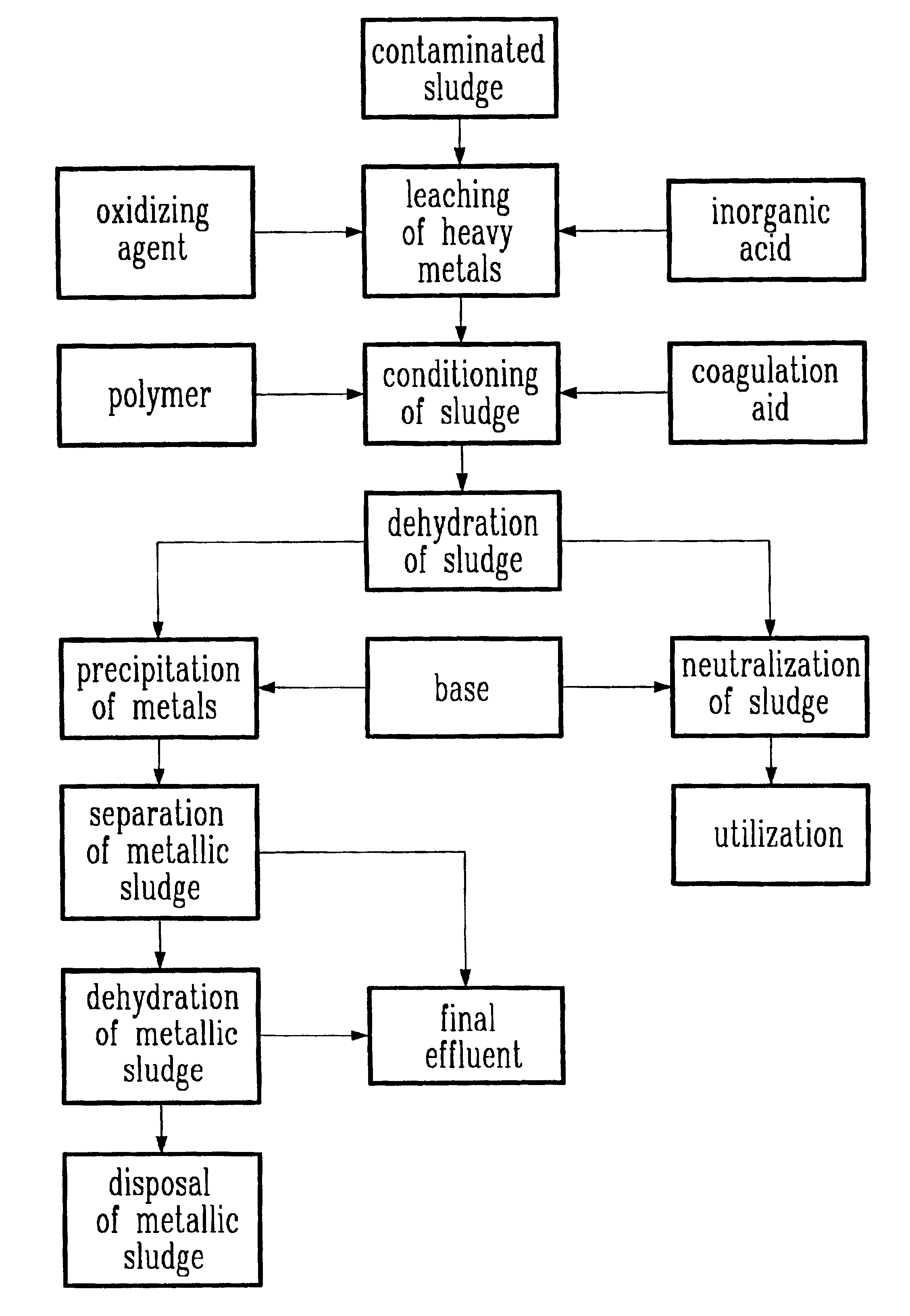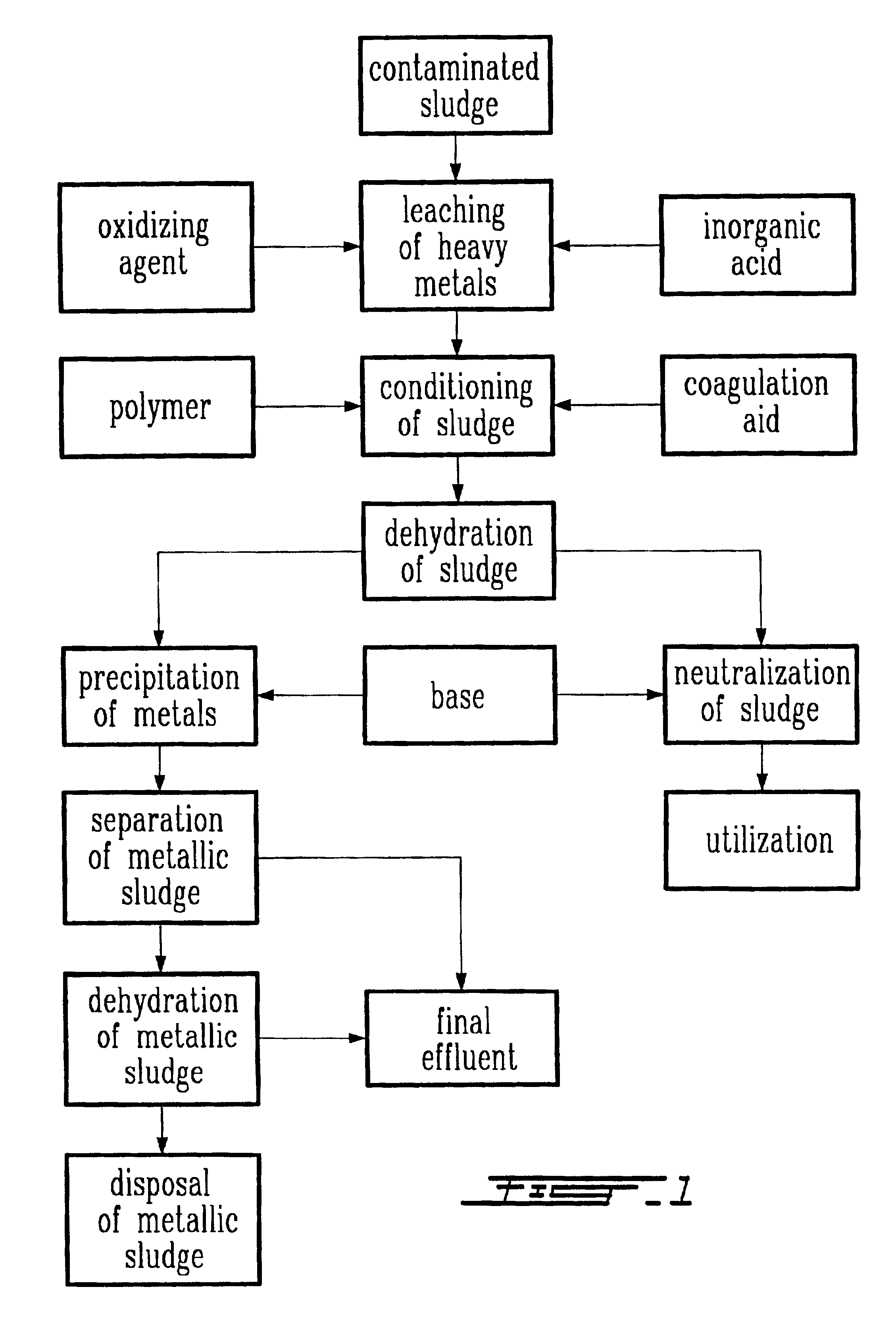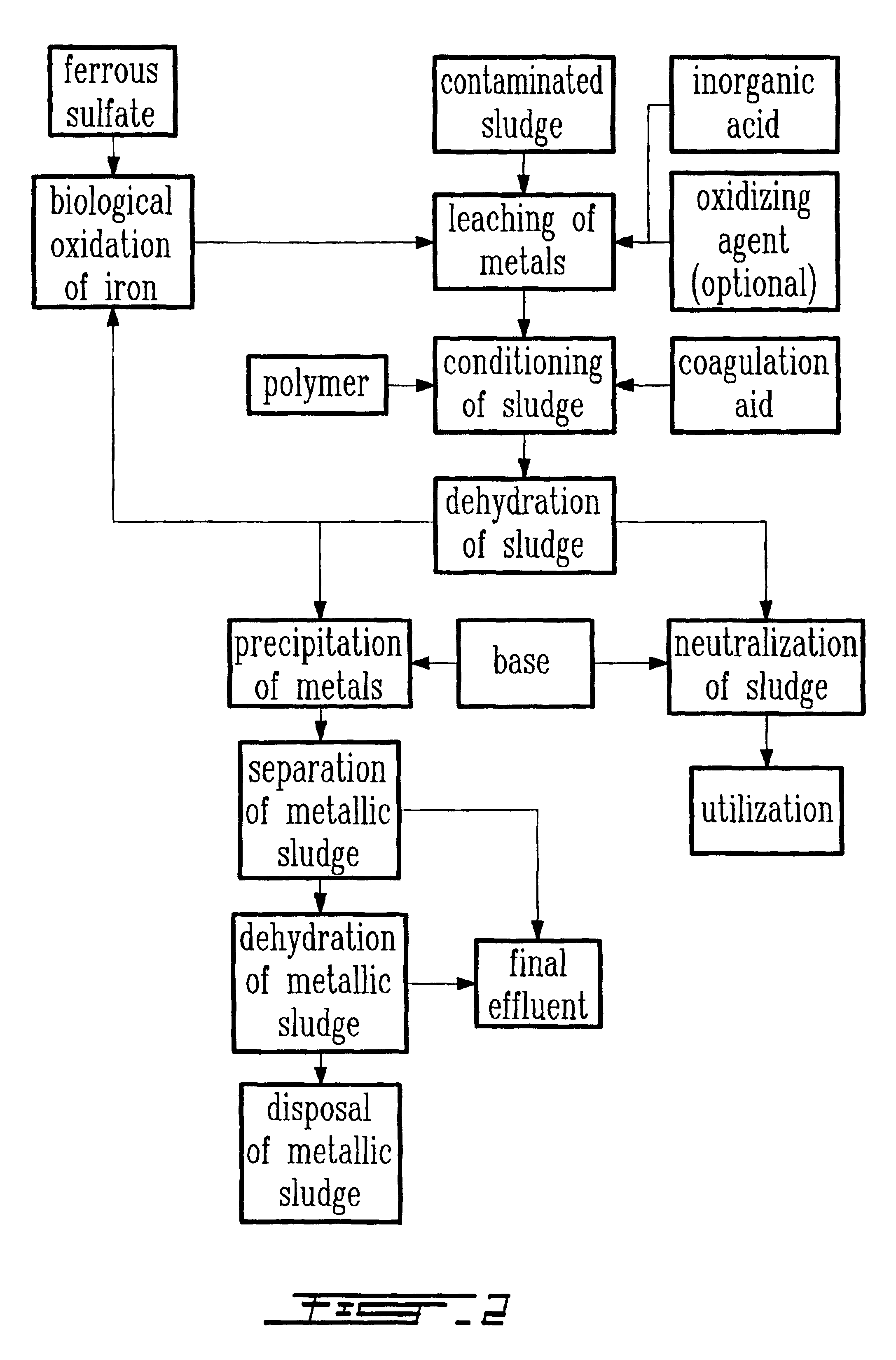Hybrid chemical and biological process for decontaminating sludge from municipal sewage
a technology of municipal sewage and sludge, which is applied in water/sludge/sewage treatment, water contaminants, specific water treatment objectives, etc., can solve the problems of ineffective removal of toxic metals, potential toxicities, and ineffective destruction of pathogenic microorganisms, so as to reduce reduce the applicability. , the effect of increasing the overall cost of sludge treatmen
- Summary
- Abstract
- Description
- Claims
- Application Information
AI Technical Summary
Benefits of technology
Problems solved by technology
Method used
Image
Examples
example 1
The process of the present invention was tested for the treatment of physicochemical sludge generated during the treatment of municipal waste water with the aid of ferric chloride. A total of 47 tests were carried out in a batch-type operation. A volume of 143 m3 of sludge having a total mean solid content of 29.3 g / L was treated using a leaching step by direct addition of sulfuric acid and hydrogen peroxide as oxidizing agent to the sludge. Values of pH varying between 2.0 and 2.6 were employed, while the oxidation reduction potential was adjusted to between 400 and 500 mV during these tests, with the leaching time varying between 1 and 4 hours.
The results show that it is possible to reduce the toxic metal content in sludges so as to conform to the criteria for the utilization of this biomass. The mean content of the following elements per kg of dehydrated and decontaminated sludge was obtained for all sludges generated during the tests:
Cd5.83 ± 2.93 mg / kgCr 127 ± 36 mg / kgCu 273 ± ...
example 2
The process of decontamination and stabilization was tested for the treatment of biological sludges coming from municipal waste water treatment. During these studies, a total of 4 tests were completed in a batch-type operation. A volume of 16 m3 of sludge having a total mean solid content of 20.5 g / L was treated using a leaching step by direct addition of sulfuric acid and ferric chloride as oxidizing agent to the sludge. Values of pH varying between 2.0 and 2.5 were used, while the oxidation reduction potential was adjusted to between 400 and 490 mV during the test with the leaching time being between 1 and 4 hours.
For these tests, the following yields of dissolutions of metals were achieved, based on the concentration of metal in solution, measured in the dehydration filtrate of the decontaminated sludge.
Cd90.8 ± 11.4%Cr63.0 ± 2.4%Ni84.0 ± 11.7%Pb30.5 ± 7.6%Zn91.8 ± 4.5%
Measurement of the reduction of the concentrations of total coliforms, of fecal coliforms and fecal streptococci...
PUM
| Property | Measurement | Unit |
|---|---|---|
| Time | aaaaa | aaaaa |
| Time | aaaaa | aaaaa |
| Electric potential / voltage | aaaaa | aaaaa |
Abstract
Description
Claims
Application Information
 Login to View More
Login to View More - R&D
- Intellectual Property
- Life Sciences
- Materials
- Tech Scout
- Unparalleled Data Quality
- Higher Quality Content
- 60% Fewer Hallucinations
Browse by: Latest US Patents, China's latest patents, Technical Efficacy Thesaurus, Application Domain, Technology Topic, Popular Technical Reports.
© 2025 PatSnap. All rights reserved.Legal|Privacy policy|Modern Slavery Act Transparency Statement|Sitemap|About US| Contact US: help@patsnap.com



